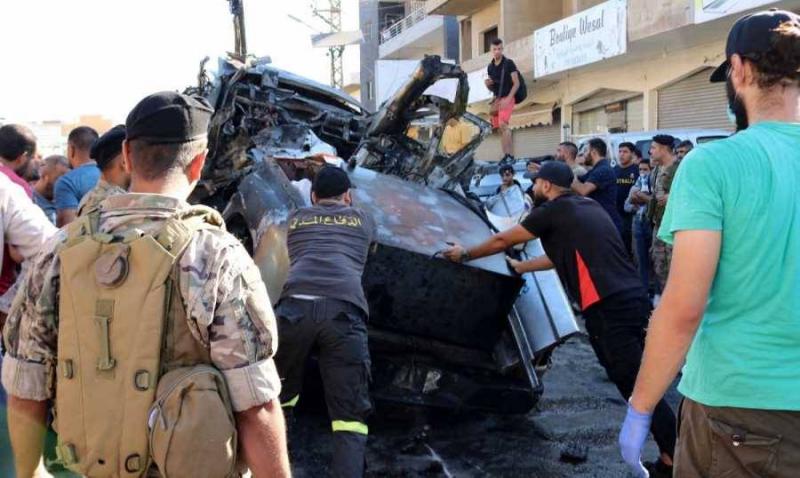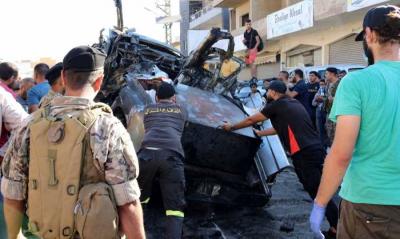During the ongoing shelling exchange with Israel for the past ten months, Hezbollah has lost prominent military leaders and hundreds of fighters, in a escalation that has displaced tens of thousands on both sides of the border and caused significant destruction, according to Agence France-Presse. The number of Hezbollah fighters who have died since the escalation began on October 8, following the outbreak of war in Gaza, has surpassed the number of its casualties in its last war with Israel in July 2006, as reported by Asharq Al-Awsat. Below are the main losses suffered by Hezbollah during the ongoing escalation.
**Leadership Losses**
Notable leaders from Hezbollah have been killed by Israeli strikes in recent months, most notably Fouad Shukr, who was in charge of military operations in southern Lebanon and was killed in an Israeli airstrike on the southern Beirut suburb on July 30. Hezbollah vowed to respond to his killing. In January, Wissam al-Tawil, a military leader from the Radwan Force, which includes Hezbollah's elite fighters, was killed in an Israeli strike targeting his vehicle in southern Lebanon. Two other leaders from the party's three operational areas in the south were also killed. Since 2006, Hezbollah has divided its military operational area in southern Lebanon into three zones, each with its own integrated military formation, leader, weapons, and capabilities, as clarified by the party's Secretary-General Hassan Nasrallah in July.
The area of South Litani is divided into two parts; the first extends from the sea to the middle of the South Litani region, known as the Aziz area, where its military commander Muhammad Naima Nasir was killed in an Israeli airstrike on his vehicle in Tyre on July 3. The second area extends from the middle of South Litani to Shebaa Farms, which is the operational area of the Nasr Unit, the first to initiate shelling towards Israel following the outbreak of the Gaza war. Its commander Taleb Abdullah was killed in a strike on a house he was in at the town of Jouya on June 11. The third area stretches from North Litani to the city of Sidon, the operational area of the Badr Unit. Israel has repeatedly announced that it has killed other leaders of Hezbollah.
**Fighter Casualties**
The escalation across the border has resulted in the deaths of at least 570 individuals, including at least 118 civilians and over 370 Hezbollah fighters. Among the dead are also dozens of members from groups allied with Hezbollah, including Hamas, according to a count by Agence France-Presse based on Lebanese authorities and Hezbollah's own mourning statements and those of other groups. The Israeli authorities, on their part, reported that at least 22 soldiers and 26 civilians have died since the escalation began. In addition to the fatalities in Lebanon, Hezbollah mourned 25 fighters who died in Syria since the escalation began, stating that most died as martyrs "on the way to Jerusalem," a phrase it uses to mourn its fighters killed by Israeli fire since the escalation with Israel alongside the Gaza war. Israel has been conducting strikes in Syria for years targeting positions of the Syrian army and pro-Iran groups, including Hezbollah, in an effort to cut off the supply route between Iran and Lebanon.
According to Hezbollah's mourning statements, around 320 of their dead hail from villages and towns in southern Lebanon, with dozens from villages located on the front line with Israel. About sixty fighters came from the border area of Baalbek (east) adjacent to Syria. Since January, Hezbollah has begun to include the birth dates of fighters in mourning statements, and since then more than 230 fighters have died, with about seventy percent being below the age of forty. At least six of the party's deaths were individuals aged twenty or younger, three of whom were born in 2006 or after. In 2006, the number of Hezbollah fighters who died during the July 2006 war did not exceed 300, according to a source close to Hezbollah who preferred to remain anonymous.
**Hezbollah Operations**
Hezbollah repeatedly states that its attacks against Israel are in support of Gaza and its ally Hamas in the war it has been waging against Israel since October 7, following an attack the movement launched on Israel. The escalating cross-border attacks have raised fears of a broader conflict. Lebanon is living in a state of tension and anticipation since Shukr's killing, waiting for the response promised by Hezbollah against Israel. On August 3, the party announced through a graphic published by military media that it had conducted 2,500 military operations against Israel since October. It stated that the number of targets on the border reached 1,328, in addition to 391 targets on military barracks, using various types of weapons including artillery, ground-to-ground missiles, air defense weapons, and guided missiles. The party also published three video clips claiming they were footage from reconnaissance drones, showing what appeared to be a target bank across the border that could be subjected to Hezbollah strikes in the event of a large-scale war. The footage includes aerial images of military sites in northern Israel and the occupied Golan Heights, as well as important locations like the port of Haifa city, according to Asharq Al-Awsat.




